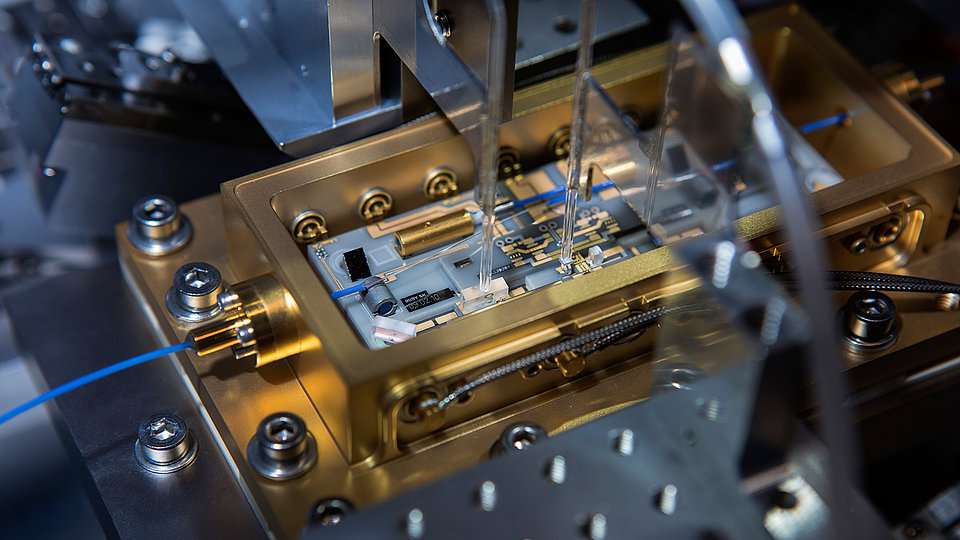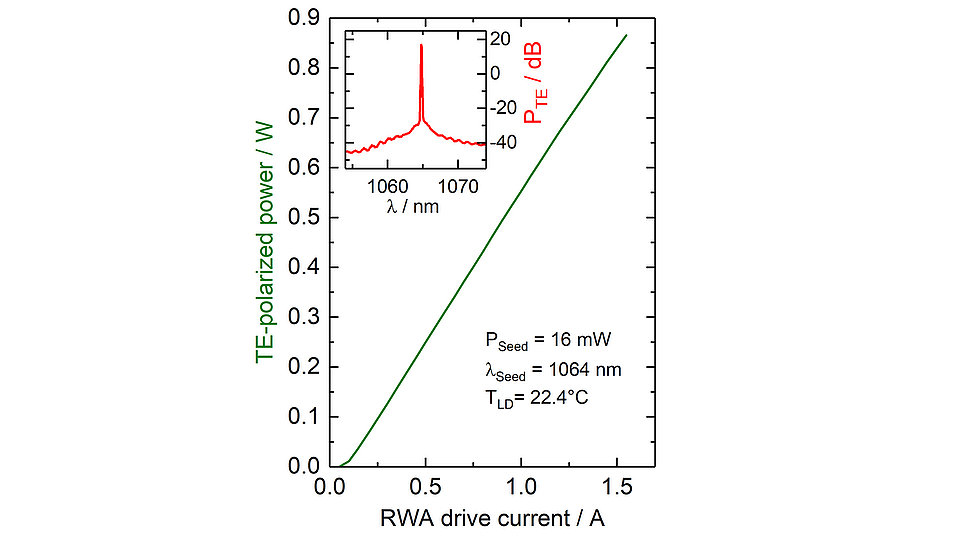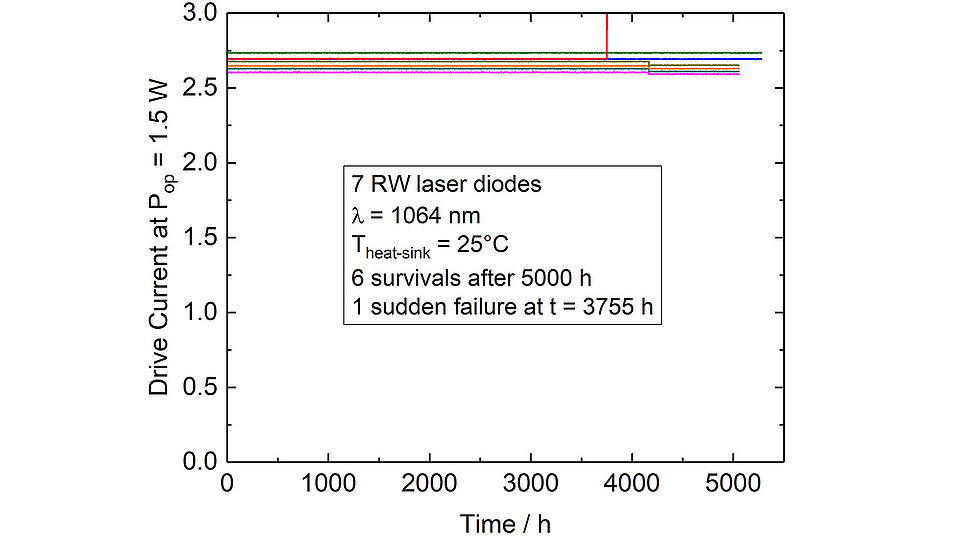Space qualification of 1064 nm laser modules for cold-atom experiments on the ISS
The German and US American space agencies DLR and NASA launched the project “Bose Einstein Condensate and Cold Atom Laboratory” (BECCAL). The joint venture aims to investigate many-particle quantum physics of cold-atoms in micro-gravity on board the International Space Station (ISS). For this mission, we will deliver more than 50 laser modules with wavelengths ranging from 764 nm to 1064 nm. We have now reached an important milestone by qualifying our laser modules for a reliable light emission at 1064 nm over the operational life time of 10,000 hours.
The wavelength-stabilized laser modules consist of an extended cavity diode laser (ECDL) as master oscillator, followed by an optical isolator, a 5 µm narrow ridge-waveguide semiconductor optical amplifier (RWA), and beam forming optics to couple the light into a single-mode optical fiber. Our modules are assembled on a semi-automated high-precision mounting stage (Fig. 1), using materials and processes that meet the stringent requirements for operation in space.
In terms of operational life time, the RWA is the most critical part of the module, since its power density is in the range of 2 x 107 W / cm2 at the exit of the light emission (approximately 1 W optical power). A typical master oscillator power amplifier (MOPA) with an RWA made of an InGaAs double quantum well embedded in a 4.8 µm wide asymmetrical large optical AlGaAs cavity shows an output power exceeding Pop = 0.83 W at Iop = 1.5 A drive current in continuous wave operation. The seed power from the master oscillator is typically 16 mW at 1064 nm (Fig. 2). This performance is demanded to warrant an optical power at 500 mW ex fiber – even in a worst-case scenario, considering only 60 % coupling efficiency into the optical fiber.
Due to its high power-density, the RWA tends to suddenly fail by catastrophic optical mirror damage (COMD) at its output facet. Although huge efforts have been made in the past decades to suppress COMD by protecting facets with non-absorbing windows or passivation layers, these standard procedures still do not provide a sufficiently reliable protection for highly strained InGaAs quantum well lasers operating at high powers above 1 µm wavelength.
We have now successfully achieved superior protection against COMD by using in situ ZnSe facet passivation after cleaving in ultra-high vacuum [1]. In a first step, we estimated the thermal and photon-density related stress parameters for the degradation of lasers with standard passivation. For this purpose, we used accelerated aging experiments of 15 samples at different temperatures and different optical powers; 13 of them failed, mostly by COMD. Thereafter, we subjected several lots of in situ cleaved and passivated lasers to accelerated aging at highest applicable powers (1.5 W to 1.7 W), about 20 % below thermal saturation. Each lot consisted of nominally identical laser diodes, either of straight ridge-waveguide (RW) or slightly tapered ridge-waveguide (RWT). In contrast to the standard-passivated lasers, no COMD was observed anymore, and only few lasers failed caused by internal defects.
The accelerated life-test plots of 7 RW laser diodes at 1.5 W optical power over 5,000 hours indicate only one failure without COMD after 3,755 hours [Fig. 3]. The derived mean time to failure (MTTF) for normal operating conditions was 2.9 million hours for RW lasers and 0.75 million hours for RWT lasers. The reliability (probability of survival) was 100 % for both variants at Pop = 0.83 W after 10,000 hours. As a result, our 1064 nm laser modules are now qualified for BECCAL. More details will be published [2].
This work is supported by the German Space Agency (DLR) with funds provided by the Federal Ministry for Economic Affairs and Climate Action (BMWK) due to an enactment of the German Bundestag under Grant No. 50WP1704.
Publications
[1] J.E. Boschker, et al., „Stability of ZnSe-passivated laser facets cleaved in air and in ultra-high vacuum”, submitted to IEEE Photonics Journal (2022)
[2] K. Häusler, et al., „Operational Lifetime Qualification of Laser Diodes for BECCAL”, submitted to ICSO conference (2022)


